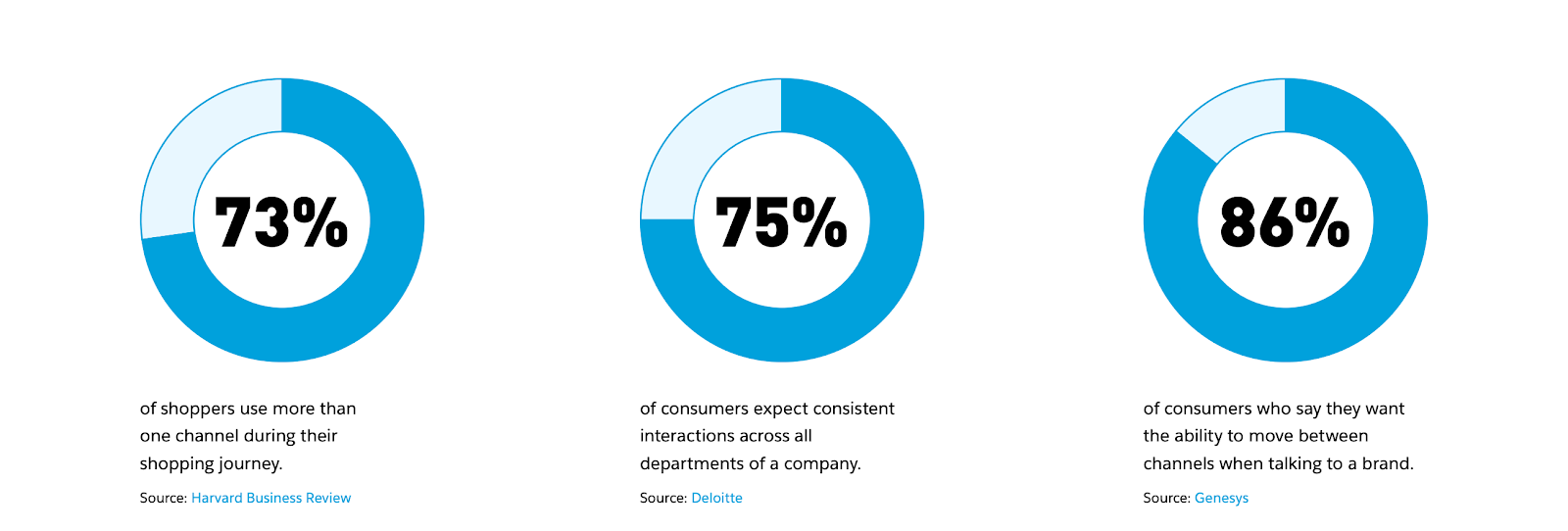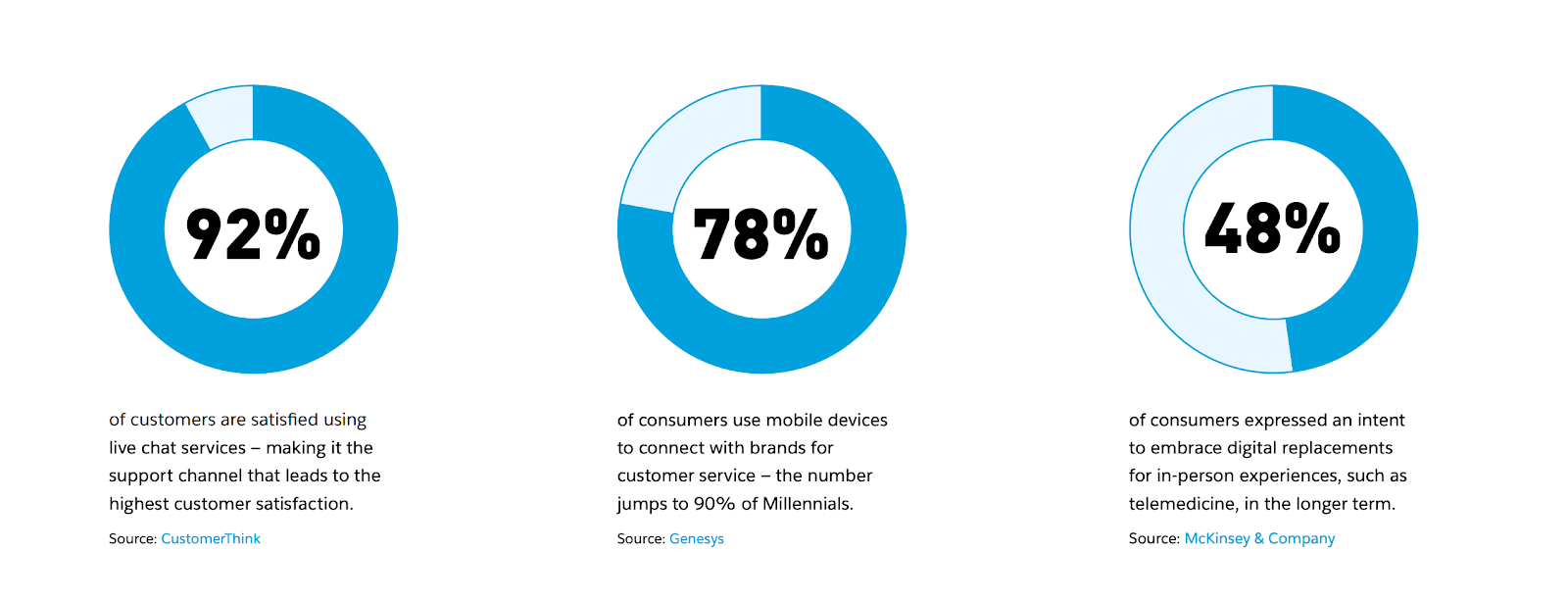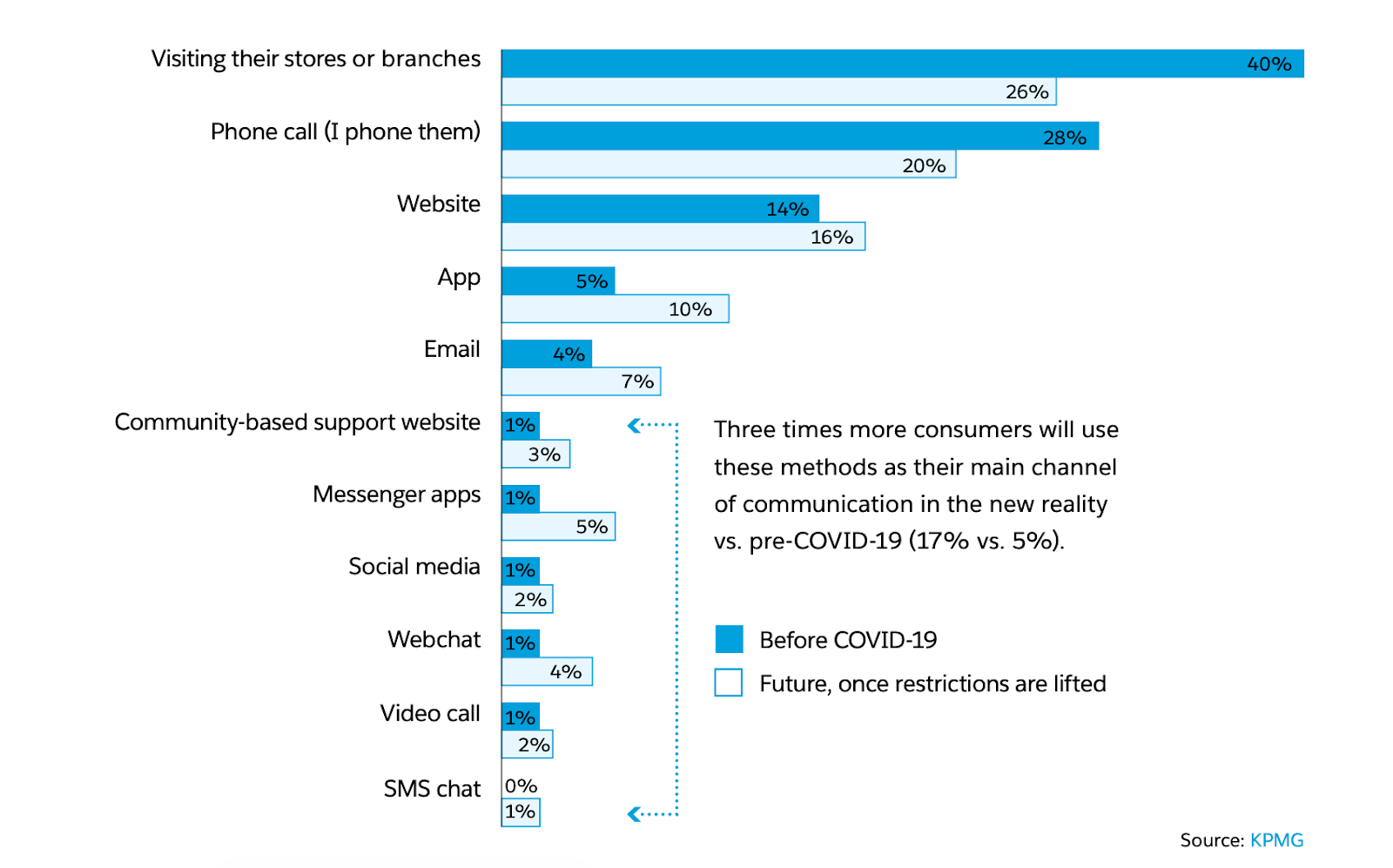In the wake of the pandemic, an organization’s ability to adapt quickly to changing customer expectations has become critical. IT has become the primary driver of business innovation. Tackling this shift requires companies to rethink the role and impact of IT in their day-to-day customer experience. Could digital innovations signal a long-term upward trend for digital transformation?
Based on recent data, we’ve estimated eight IT trends that are coming in 2021. Due to the unforeseen circumstances of 2020, organizations are now under greater pressure to digitize services quickly to meet rising customer demands and create new revenue channels. In this blog post, I will be discussing the shift organizations will make toward a digital-ready culture.
IT under pressure to meet demands
There is increased pressure on IT leaders to deliver on digital initiatives. However, the challenges are inevitable with today’s COVID-19 remote workforce, challenges with innovation, the customer demands of digitized efficiency, and the unforeseen consequences with each new experiment.
Organizations are under pressure to stay competitive while struggling to keep up with new digital demands and create connected experiences. These rising demands are forcing organizations to accelerate their digital transformation and digitize every part of the business. This can be difficult for organizations that are burdened by legacy systems and ineffective processes.
According to MuleSoft’s Connectivity benchmark report, IT projects are expected to grow by 40% — and IT is now responsible for delivering connected experiences for 82% of businesses. The biggest challenge that stands in their way is integration — with 85% of IT leaders reporting this alone hinders their digital transformation efforts. To accomplish this, IT must rethink its operating model to deliver self-serve capabilities and enable innovation across the enterprise.
This directly impacts organizational culture. Organizational culture is a vital aspect of any successful business or organization. To drive scale, efficiency, and change organizational culture, IT must rethink its operating model to deliver self-serve capabilities and enable innovation across the enterprise.
What is a digital-ready culture?
According to The Enterprises Project, digital-ready culture is a shared and mutually reinforced set of values and practices that enable high performance in the service of innovation and execution in a digitally-enabled business environment. Digital-ready culture defines how we, as humans, interact with the internet in our day-to-day lives. Digital-ready culture may be applicable to multiple topics. However, it comes down to one common denominator: the relationship between humans and technology.
Understanding the relationship between humans and technology is the key to any digital transformation. The acceptance and observance of future technologies across all fields, from energy, to work, or even entertainment. We simply cannot deny that the world that we live in today is ever-changing. This reliance on technology can be observed in the way we now communicate in the all-digital workforce and in the way the world has shifted toward tele-commuting.
However, technology is the one thing that bridges the gap between convenience and modern evolution. There is a rapidly increasing dependence in the use of technology by humans. Therefore, it can be observed that culture and technology are two great forces that influence one another. As new technology is integrated into society, the culture may react in a positive or negative way. As cultures change, technology develops.
Why digital-ready means customer-ready
Industry leaders must take on integration to meet digital demands and scale. Statistics show that customers want consistent engagement with brands across their preferred channels — especially digitally.


Digital transformation is now more essential than ever. Organizations need to invest in new digital methods of customer service The experience of the customer is the root of nearly every digital transformation initiative. The speed and interconnectedness of the digital world demand new approaches to customer demands and results. Focusing on anticipating customer desires will lead to customer satisfaction. Organizations need to invest in new digital methods of customer service. Customers are utilizing digital means of communication and digitized apps now more than ever. Three times more consumers will use social media, messenger apps, or other digital methods of customer service as their main channel of communication in the new reality compared to pre-COVID-19.
Businesses must recognize that customer experience is the distinguishing factor from their competition. Transforming the customer experience is now imperative. APIs can enable these digital experiences. However, they have to be organized and connected in a strategic manner to provide value.
APIs are becoming increasingly valuable to businesses because they have provided the easiest way to connect systems together to exchange information. APIs can be used to assist in connecting customers while providing digital transformations. They can be utilized to improve products, systems, and operations while providing valuable insights to help make better business decisions. But they have to be organized and connected in a strategic, holistic way to provide any value.
According to our whitepaper on improving the customer experience with an application network, organizations that fail to build an engaging customer experience will not only lose to the competition but will also lose significant revenue — as customers that have a great experience spend 140% more than their counterparts. To build a better customer experience, businesses are fundamentally rethinking their integration strategy in order to build new products, provide personalized engagements, and improve existing experiences across diverse applications — whether these apps are on-premises, in the cloud, or in a hybrid environment.

Industry leaders such as Casey’s, WatchBox, and RBC are tackling integration to meet digital demands and scale. The answer is simply using an API-led approach to quickly compose new digital experiences. Here are a couple of examples:
- Casey’s rolled out a third-party food delivery service to 600 stores, up from just 35 at the start of its pilot program.
- WatchBox stood up an eCommerce platform and reused the same APIs to serve five new regions.
- RBC tapped into critical data in legacy systems and build solutions to eliminate paper-based processes and cumbersome manual data entry.
To see more digital trends coming in 2021, download our trends whitepaper.









